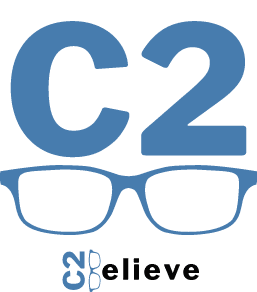Listen and follow
Introduction
Is company culture important? If you think it is, this article addresses how OKR builds Company Culture.
In Taiwan, most Tech Companies don’t spend a lot of time considering culture, outside of the Annual Party, Free Snacks, or Pizza days. Because of a lack of a working culture, problems can surface:
- departmental conflict
- politics
- poor planning
- misunderstandings
- unfulfilled expectations
- uninspired, overworked, frustrated staff
- project delays
OKR Management Framework (Objectives and Key Results) brings structure and organization to companies, building a foundation for a good working culture, that mitigates a lot of the problems mentioned above.
New to OKR? See “What is OKR?”

What is Company Culture?
Most CEOs in Taiwan will be hard pressed to answer the question, “What is your company culture?” Understandably, companies are focused on revenue, product development and growth – who has time for culture?
And yet, most of us agree that culture is one of the cornerstones of a well-run company. it represents the internal character and behaviors of a company.
In the book “Measure what Matters”, it states that the venerable Andy Grove, former Intel CEO said,
“Culture is a set of values and beliefs, as well as familiarity with the way things are done and should be done in a company. The point is that a strong and positive corporate culture is absolutely essential.”
Company culture is when most of the people in a company follow similar patterns of working behavior.
These might include:
- how you communicate
- how you engage your staff
- the meaning of accountability
- how your company grows
- how departments collaborate
- how you mitigate conflict
However, in most Taiwan Tech companies, executives and teams operate with their own style, cadence, and other preferences which eventually result in silos, conflict and even chaos. Essentially there is no consistency, no culture
Find out about Silos “OKR vs Departmental Conflict”
Management is the core of Company Culture
Management defines the structure of an organization (org chart), determines the direction of the teams they lead, and how things get done – management becomes the most impactful aspect of establishing culture, for better and sometimes for worse (bad culture).
When culture is not intentionally nurtured, dysfunction almost always surfaces. How do you establish a good working culture without applying rigid rules, and inhibiting creative freedoms?
Building culture with the OKR Management Framework.
The OKR Management (Objectives and Key Results) is a robust management framework. It has often been referred to as a training ground for executives and managers.
When you establish a proper management framework into your organization, a common set of guidelines are established for your managers to follow. This becomes the blueprint for building a good working culture.
How does OKR build culture?
OKRs help a company set the tone and cadence. It identifies the important goals on the table, and how they will be achieved. From the CEO all the way down to the front-line staff, OKRs help to structure and organize the working culture of the company to accomplish those objectives.
How do you define the characteristics of OKR?
- Goal-oriented
- Aspirational and progress-based
- Aligned from top-to-bottom
- People-oriented
- Critical thinkers
- Teamwork based on common goals
- Transparent
- Agile and Vigilant
- Always improving – Introspective, retrospective
Once you install OKRs in your company, you will now have well-defined characteristics and behaviors. With persistent nurturing, they become pervasive and habitual, which is essentially “Company Culture”.
Culture grows when it is consistent and persistent
Establishing OKR culture requires consistent coaching and reminders. It’s this persistent discipline that allows OKR ideas and strategies to take root, gain traction, and eventually become habit.
It’s important that executive leadership, and management is especially keen about this.
Often-used OKR terminology is also very important for culture.
In addition to the term “OKR” itself, terminology that is reiterated in meetings, presentations, and chat rooms, helps to further entrench OKR culture. These are mantras, slogans, acronyms and taglines:
- Top-Down, Bottom-Up collaboration
- If a KR isn’t a number, it’s not a good KR
- CFR – Conversation, Feedback and Recognition
- Cascading and Laddering
- Where’s the stretch?
- CPR – Continuous Performance Review
- LGA – Learn, Grow and Achieve
- Beat yesterday
Some of these may come from OKR ideology, some may come from your own company culture – the point is that terminology, consistently used, can help mold the culture.
Cadence is also important for culture.
Companies have rhythm – weekly meetings, annual reports, monthly activities. OKRs also have cadence, also important to maintain culture.
- Quarterly OKR planning
- Weekly check-ins.
- Weekly progress monitoring (managers)
- Monthly one-on-one
These periodic events are also important to sustain culture.
Making sure OKRs stick with OKR Coaches & Master
Establishing OKRs in a company means more than training and deployment. Becoming good at OKRs is like learning a skill like the violin or basketball. It takes time and practice. Companies will employ external OKR coaches to implement OKRs and make sure OKRs are appropriately applied.
External Coach
Similar to exercising, if you don’t have an OKR coach during the first few cycles, there is a tendency to let off the gas. External OKR coaches are there to push you and cheer-lead the OKR efforts over at least 2 cycles.
Internal Coach
During implementation, the external coach will train Internal OKR coaches. This is important to sustain OKR training after the external coach.
OKR Master
Companies will usually designate an OKR master. This person will be the company OKR expert, who will make sure that OKRs are appropriately applied.
Conclusion: OKR builds Culture.
So, what’s your company culture?
If someone asked me what the culture of my company was – I would say:
“We are a goal-oriented company, with clear aspirations. Our teams are aligned top to bottom with our Mission and Visions. We are people-oriented and support our our staff to bring their best every day. We encourage critical thinking and collaboration with conversation, feedback and recognition. Transparency is paramount for communications and avoiding misunderstandings. We keep our cadence with agile and vigilant 3-month planning period. We are always improving with introspection, retrospection. Reach for Goals – that’s what we do”
And that’s OKR culture.

References
Measure what Matters | How Google, Bobo and the Gates Foundation Rock the World with OKRs | John Doerr | Copyright 2018
Objectives and Key Results | Driving Focus, Alignment, and Engagement with OKRs | P. Niven and B. LaMorte | Copyright 2016
The OKRs Field Book | A Step-by-Step Guide for Objectives and key Results Coaches | Ben LaMorte | Copyright 2022
OKR Training Classes in Taiwan
C2believe provides OKR training with classtime, exercises, and coaching.
On Site or Off Site | English or Chinese | In Taiwan (or remote)
- Introduction to OKR for leadership (2 hours)
- Team OKR Class (18 hours) – Classtime, exercises and coaching
- 8-month OKR deployment (coaching and train the trainers)
Contact us about your OKR training needs here
Look who’s using OKRs.











0 Comments